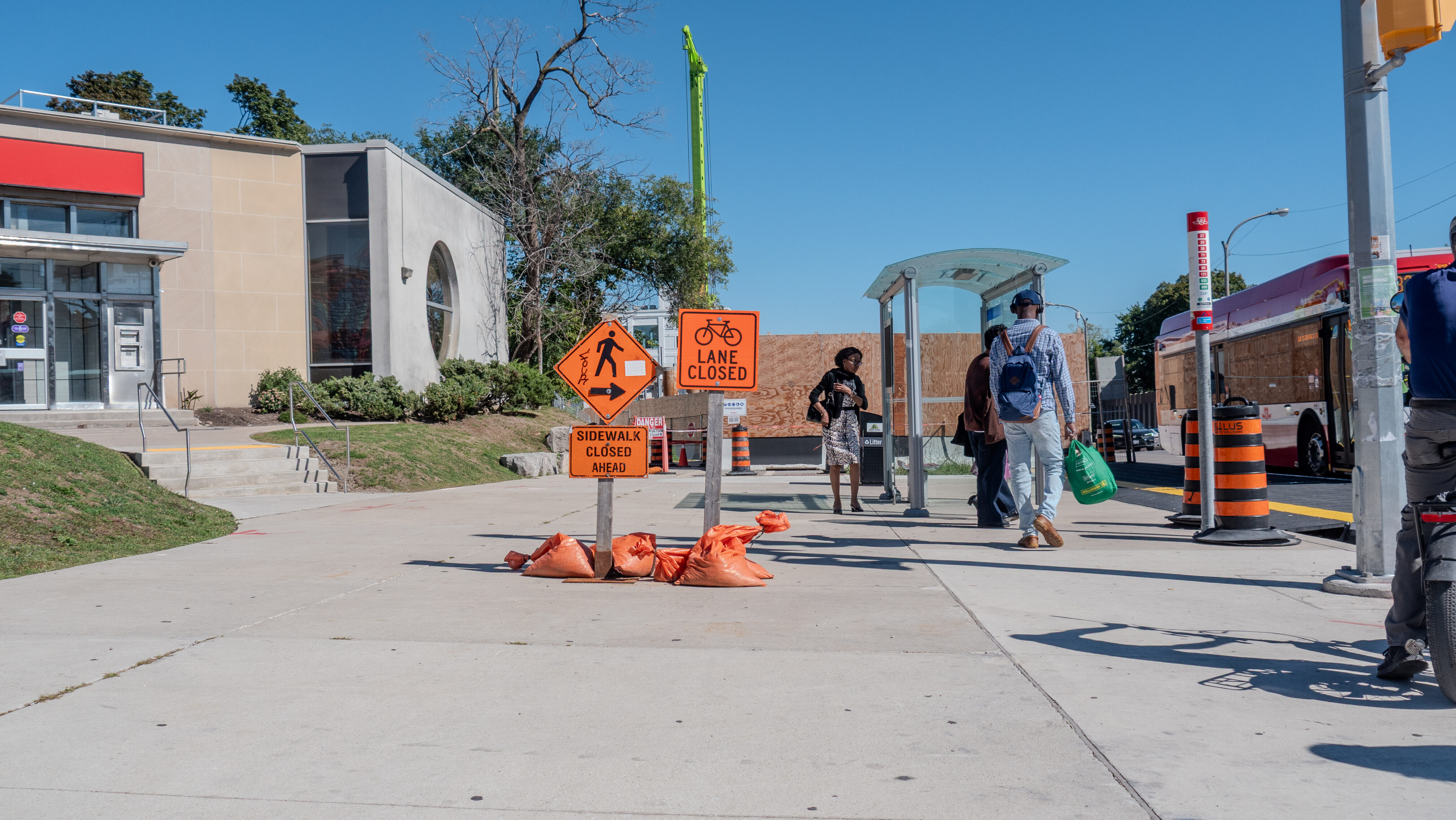THE GREEN LINE
ORIGINAL STORY
HOW OAKRIDGE WOMEN TACKLE FAMILY POVERTY WITH PEER-TO-PEER JOB TRAINING
The Green Line team visited South Asian Women and Immigrants’ Services to learn how its workshops, built by immigrants for immigrants, are helping local women gain employment.
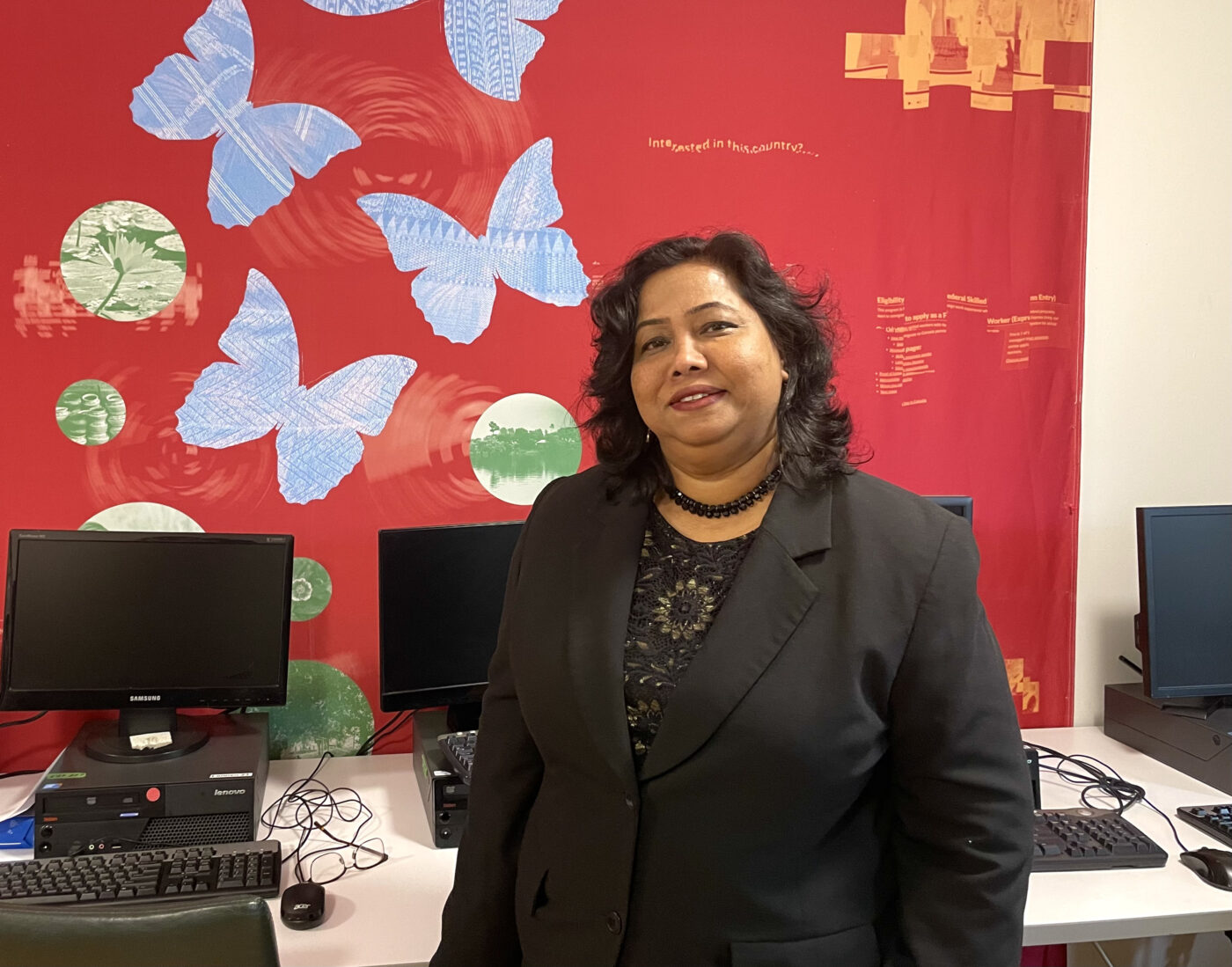
Sultana Jahangir, executive director of South Asian Women and Immigrants’ Services, stands in front of a mural inside the computer lab at 10 Teesdale Pl.


AMANDA SERAPHINA JAMES RAJAKUMAR
Indian immigrant with a post-grad in journalism from Centennial College. Now living in Grange Park, meeting new people, and hearing different stories. Has four names, so it’s a pick-your-player situation.

MARY NEWMAN
British-Canadian journalist with a decade’s experience producing for the BBC and CBC. Hails from Robin Hood country so naturally hates wealth inequality and loves organized labour. Now resides in the dog paradise of Roncesvalles.
Sept. 19, 2025
Tips on improving women employability:
- Gather women in the neighbourhood who require assistance finding work.
- Assess each woman’s computer skills, language efficiency and any other relevant areas of improvement.
- Find women from the community with good computer and conversational skills to teach the underqualified women.
- Use available space in community centres or members’ houses.
- Hold classes once or twice every week and assess each woman’s improvement over time.
- Offer free childcare during class hours.
Toronto’s job market is extremely competitive. Having the right education, skills and work experience can make or break your resume.
So women in Oakridge are taking it upon themselves to ensure every woman in the neighbourhood can enter the workforce through employment workshops built by immigrants for immigrants.
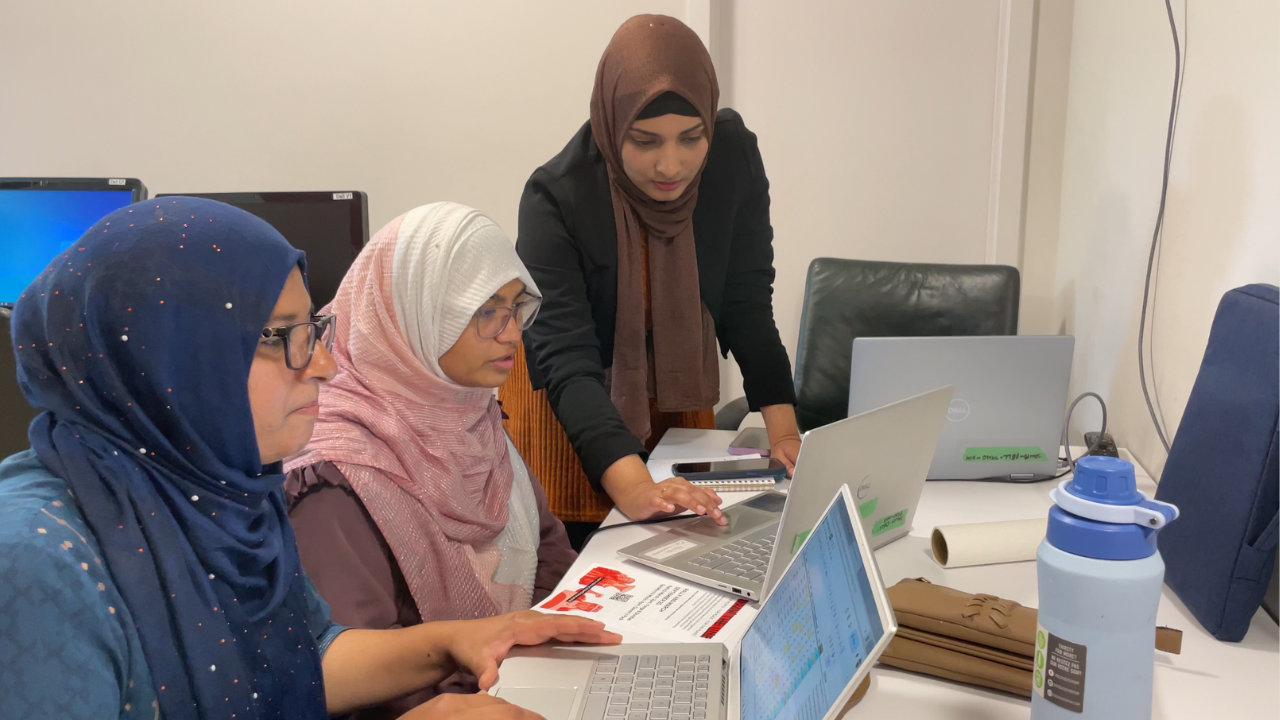
Arshadun Nessa Niva, project support worker at SAWIS, helps women in the advanced computer class at 10 Teesdale Pl.

In Southwest Scarborough, Oakridge is recognized by the City of Toronto as a Neighbourhood Improvement Area with a median family income that's $30,000 less than the rest of the city, and with 26 per cent of children under six living in low-income households.
Local women saw a need to push towards a better life, so in 2008, the South Asian Women’s Rights Organization — now renamed as South Asian Women and Immigrants' Services (SAWIS) — was born.
The community group is helping women gain employment so they can provide for their families.
Sultana Jahangir, the executive director of SAWIS, says that immigrants come with the hope of providing a better life for themselves and their children, but they're taken aback by the reality of services available to them.
“The women first feel shocked that the services that are available right now isn't accessible to them, like the systemic exclusion for childcare, systemic exclusion to recognize their skill and experience, systemic exclusion in not getting the housing that they need right now, social housing or adequate housing. That exclusion is creating poverty on them, so they're struggling here."
Jahangir goes on to explain that Oakridge is a port of entry for immigrants, yet it lacks the necessary services to support newcomers, leading to isolation amongst the women.
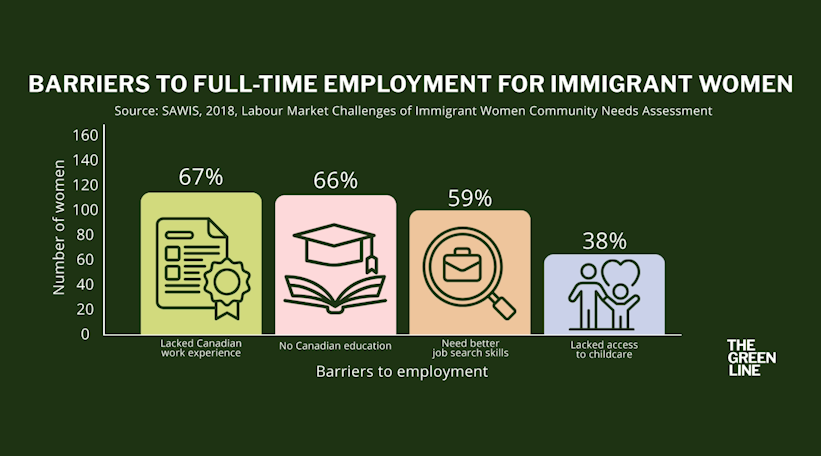
Bar graph on the barriers to employment for immigrant women based on SAWIS’ 2018 Labour Market Challenges of Immigrant Women Community Needs Assessment.

In 2018, SAWIS surveyed precariously employed women in the neighbourhood.
They found that a lack of Canadian work experience and education, the right job search skills and access to childcare were the biggest barriers to successful full-time employment.
So the non-profit set up classes led by community members to improve each other's employability, from strengthening workplace conversations and interview prep to a class on upgrading computer skills.
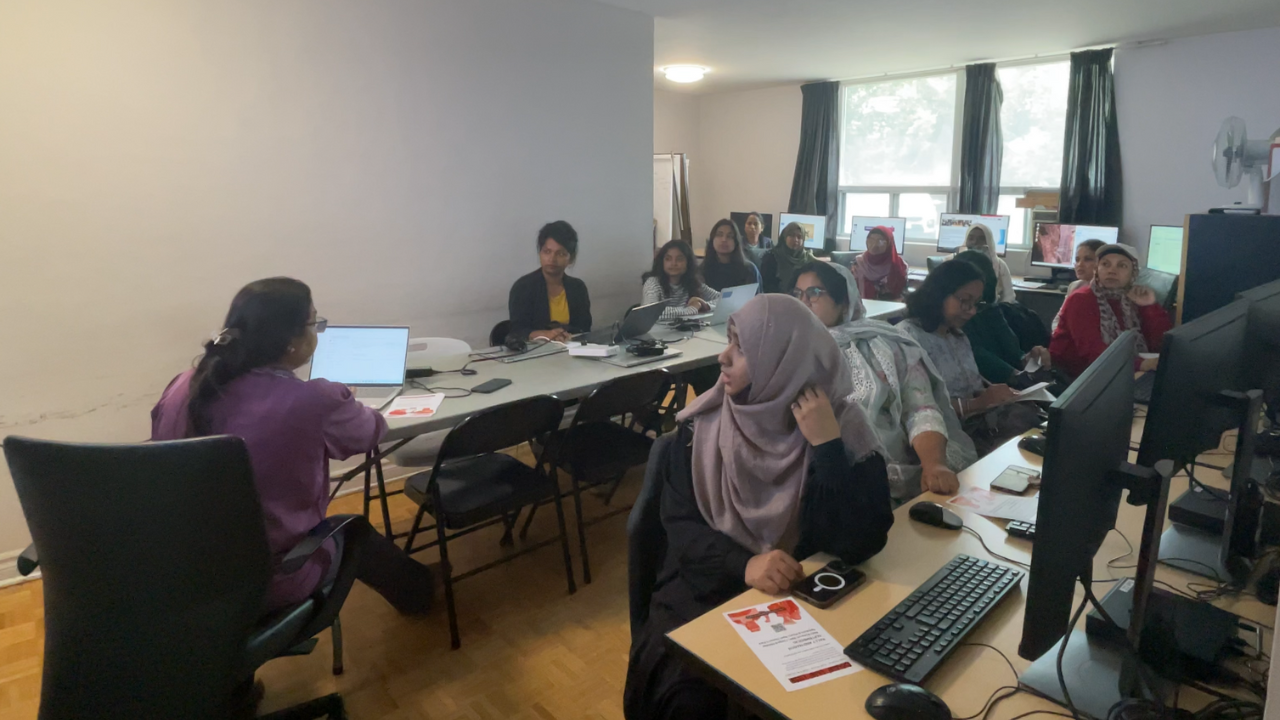
Oakridge women of all ages attend a basic computer class at SAWIS’ office at 10 Teesdale Pl.

In 2021, Statistics Canada found that 27 per cent of recent immigrants with a bachelor's degree or higher were in jobs that only needed a high school diploma, showing a trend of education and occupation mismatch.
Arshadun Nessa Niva, a project support worker at SAWIS, initially joined to improve her employability, but soon realized she was ahead and could help others, so now she leads the advanced computer class at SAWIS.
Niva shares that in her experience of looking for jobs in Canada, she found it important to have computer skills to look for jobs online, build and edit resumes and communicate with employers.
“Before coming to Canada, I worked as an HR executive and admin in a multi-national organization for more than six years, so after coming here, I started work with precarious jobs, so I realized that the computer skills and everything is very important for our community women."
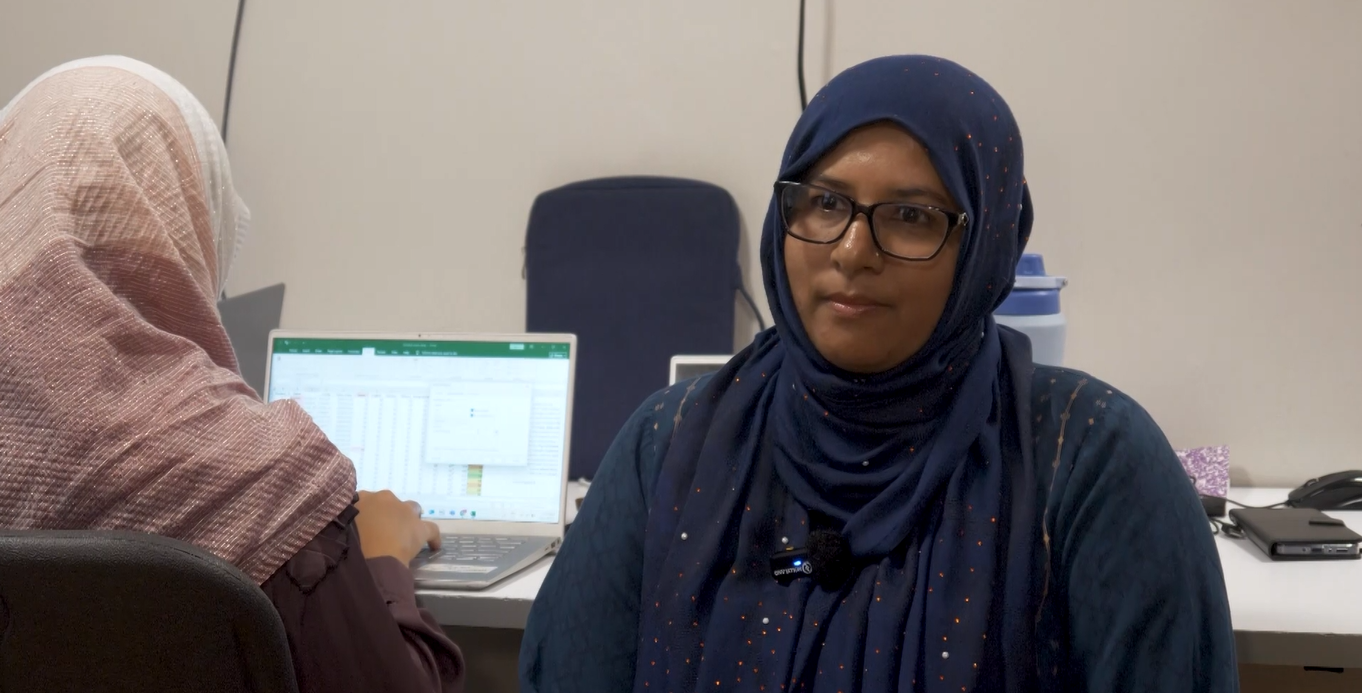
Oakridge resident MST Farhatul Zannat sits by her laptop in one of SAWIS’ computer classes at 10 Teesdale Pl.

Between 2024 and 2025, SAWIS has helped 453 women enter the labour market.
Oakridge resident MST Farhatul Zannat was able to secure admission in George Brown’s IT Help Desk Technician program with help from SAWIS. She begins her program this fall.
“Back home I was a banker, but when I came here and when I searched for jobs, this job [didn't] match my skills, I was very unhappy," she said. "But when I got this opportunity, really, I was very happy, and I'm very grateful to this organization."
SAWIS continues to run different classes to improve the employability of immigrant women in Oakridge while also empowering them to lead civic action in the neighbourhood, practicing their motto: "If the women advance, the whole community moves forward."
Fact-Check Yourself
Sources and
further reading
Don't take our word for it —
check our sources for yourself.
